Frankfurt Book Fair
Flanders and the Netherlands as Guest of Honor
Literature from the Netherlands and Flanders has been well received Germany. For several decades now, a remarkable number of translations from Dutch have been published in the German language area, especially in Germany. Many translators, intermediaries and promotion agencies paved the way for this success in years of work. It was a matter of trial and error until a turning point was reached in 1993 with the first "Schwerpunkt Flandern und die Niederlande" at the Frankfurt Book Fair. Since then, Dutch literature in translation has become an indispensable part of the literary landscape in the German-speaking world.

After 1945, it proved not so easy to break free of the narrative that literature from the Netherlands and Flanders had been stuck in since the interwar period and under National Socialism. Authors like Felix Timmermans continued to set the tone. Recent literary developments in the Dutch language area were not automatically embraced. This, however, did not mean that literature from the Netherlands and Flanders was not taken notice of.
Anne Frank's Diary, for example, which was published in German translation in 1950, was an enormous success. This started off interest in Dutch literature on the Second World War. In the first decades after 1945 translations of the works of, among others, J. Presser, Marga Minco and Etty Hillesum appeared. However, literary developments in the Netherlands and Flanders continued to be ignored.
Translators like Georg Hermanowski and Jürgen Hillner tried to bring about change in the 1960s and 1970s. In the 1950s and 1960s, Hermanowski devoted himself to Flemish literature. His selection of titles was extremely conservative, but by the end of the 1960s he had about 170 translations to his name.
Unlike Hermanowski, his successor, Jürgen Hillner devoted himself primarily to literature from the Netherlands. The literature he presented in the German language area differed radically from Hermanowski's. The work of authors such as Jan Wolkers, Jef Geeraerts, and Gerard Reve caused a stir, but did not provide a foundation for further success of dutch literature. In contrast to the children's and youth literature, Dutch literature for adults remained rather uncharted territory.
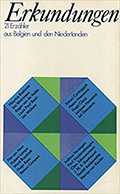
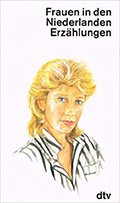
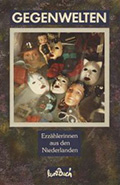
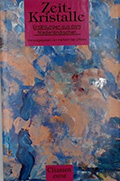
In the 1980s and early 1990s attempts were made to change this with anthologies such as Erkundungen [Explorations] (1984), Frauen in den Niederlanden [Women in the Netherlands] (1992), Gegenwelten [Counter-worlds] (1985), Mit anderen Augen [With New Eyes] (1985) and Unbekannte Nähe [Unknown Closeness] (1985). At the same time, work by a wide variety of authors was translated, including: Maarten Biesheuvel, Anna Blaman, J. Bernlef, Martine Carton, Marnix Gijsen, Willem Frederik Hermans and Paul de Wispelaere. But the breakthrough did not come about just yet.
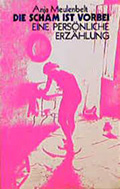
Anja Meulenbelt, who was a pioneer of feminism in the Netherlands, also received a lot of attention in Germany, changing the image of Dutch literature in Germany. Meulenbelt's Die Scham ist vorbei [Shame is Passé] was a bestseller in the 1980s, boasting 15 editions, and also Meulenbelt's other works such as Die Gewöhnung ans alltägliche Glück [Getting used to everyday happiness] and Ich wollte nur dein Bestes [I Just Wanted Your Best] were also great successes.
Hugo Claus, Harry Mulisch, Cees Nooteboom
The tide only lastingly turned with translations of the works of Hugo Claus, Harry Mulisch and Cees Nooteboom. A first big step was the publication of Udo Birckholz's translation of De verwondering [The Astonishment] (Die Verwunderung, 1979) by Hugo Claus. The book was not a great success, but it was the first important work not translated and mediated by Jürgen Hillner. The time of translator-held monopolies was over.

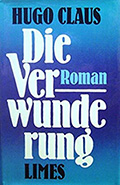


In the 1980s, more and more translators of Dutch literature became active, and it slowly became apparent that publishers, rather than intermediaries and translators, were setting the course. At the same time, organizations such as the Dutch and Flemish literary foundations started to play an increasingly important role. Using translation subsidies, they tried to win over German publishers for Dutch-language literature and did so with success. German publishers became increasingly interested in literature from Flanders and the Netherlands.
In 1986 the first translation of Hugo Claus' masterpiece, Het verdriet van Belgie, appeared. The title chosen for the German translation is extraordinary: Der Kummer von Flandern. Apparently Klett-Cotta hoped to appeal to the traditional audience of literature from Flanders this way.
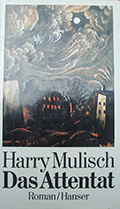
When Harry Mulisch's Das Attentat [The Assault] appeared in 1986, Mulisch already had a number of titles to his name. But he had not yet found his way to the general public. This, however, changed with the publication of Das Attentat. By the time Die Entdeckung des Himmels [The Discovery of Heaven] appeared in 1993, Harry Mulisch had become the star of Dutch literature in the German-speaking world.
Cees Nooteboom's reception in comparison saw a very unexpected development. Nooteboom's first translation in Germany, Das Paradis ist nebenan [Philipp and the Others] (1958), went virtually unnoticed as did Rituale [Rituals] which appeared almost 30 years later with Volk und Welt in 1984.
Nooteboom's breakthrough only came about with the fall of the Berlin Wall. At that time, Nooteboom was living in Berlin and closely followed the fall of the Wall. His reports were regularly published in the Berlin newspaper Die Tageszeitung. Even before the Berliner Notizen were published as a book, Nooteboom was the talk of the town.
Nootboom's absolute breakthrough was sealed after a comment by Marcel Reich-Ranicki in the television program Das literarische Quartett (10.10.1991): “it's not a bestseller, but it should become a bestseller.” And it became a bestseller. Within a few weeks more than 80.000 copies of Die folgende Geschichte had been sold!
Flanders and the Netherlands: cosmopolitan
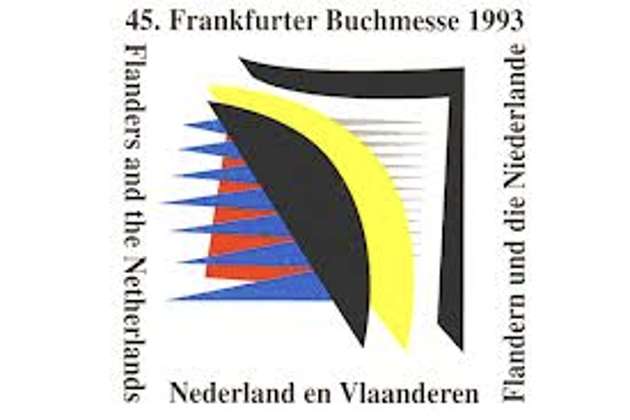
"If in the coming months you hear the sound of hands rubbing against each other from an eastern direction, then this is the explanation: it is the Germans, the Swiss, the Austrians, the German Bohemians and Moravians and whatever other kinds of German-reading peoples there are, who rub their hands when reading Dutch literature in German translation. Nescio! Nolthenius! Nooteboom!" (Corstius, 1993)(#Fairs) (Branding Dutch Literature)
In 1993, for the first time, not a country, but a language area was guest of honor at the Frankfurt Book Fair. Although authors such as Hugo Claus, Harry Mulisch and Cees Nooteboom were no longer unknown, people in Germany were not really familiar with the literature from the Netherlands and Flanders yet. This gave the organizers the chance to catch up their German audience. But what accents should one set? What would arouse interest? Were German readers more interested in what was typically Dutch or Flemish (Großer Himmel, flaches Land [Big Sky Flat Land] (1993); Die Farbe der Tulpe [The Color of the Tulip] (1993)) or did German publishers really primarily care about good literature? And what authors were they supposed to present; how many from the Netherlands, how many from Flanders?

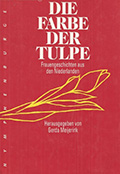

In the end, a lot of new translations appeared in 1993. Many of these translations appeared with the support of the Nederlands Literarair Producite- en Vertalingenfonds (from 2010 on Nederlands Letterenfonds [Dutch Foundation for Literature]) and the predecessor of the current Flemish literature promotion fund (Literatuur Vlaanderen [Literature Flanders]). Without this grant, fewer titles translated from Dutch would have appeared in the German language area at the time and in subsequent years.
The Frankfurt Book Fair of 1993 and the activities of the foundations to promote the translation of Dutch-language works have certainly contributed to the development that led to many classics of Dutch literature being translated into German. Whether this also means that the perspective on Dutch literature in the German language area has changed substantially is not clear. Despite the fact that more than 20% of the prose titles translated from Dutch in 2016 were classics, this does not mean that people are now wholly convinced of the importance of literature from the Netherlands and Flanders and that they now want to market not only recent works but also the canon.. It is also possible, as Lut Missinne suggests, that financial reasons determined the choice as classic titles are free of copyright and one can easily get a subsidy for the translation of such titles.
Dutch Literature in Germany (2000-)
Flanders and the Netherlands 2016
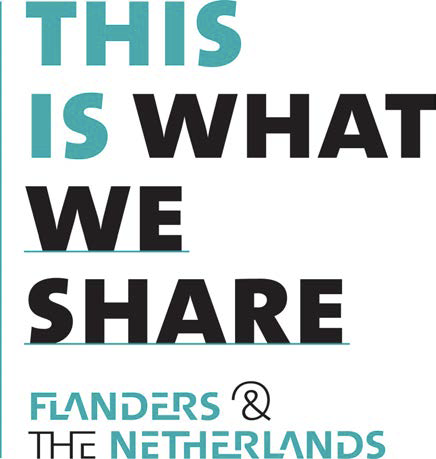
In 2016, Flanders and the Netherlands were guest of honor at the Frankfurt Book Fair for the second time. (#Fairs) It was time to give Dutch literature in German translation another boost, as the number of translations from Dutch had steadily been falling since 2001. With the title Dies ist was wir teilen [This is What we Share] the artistic director of the 2016 book fair, the author of children's and youth literature Bart Moeyaert, referred not only to the common language in the Netherlands and Flanders but also to the "closeness and mutual interest between Flanders, the Netherlands and Germany."
Unlike in 1993, it was decided to present the young generation of authors in 2016. In the context of the Frankfurt Book Fair of 2016, a whole slew of new names entered the German market, but no extraordinary successes were achieved by any of them. The top ten most translated authors in the German language area are still comprised of authors who were introduced long before the second participation as guest of honor in Frankfurt: Renate Dorrestein, Arnon Grunberg, Maarten 't Hart, Margriet de Moor, Cees Nooteboom and Leon de Winter.
Most translated Authors in Germany (2015-2022)
It is still too early to draw further conclusions, but it is clear that promotional activities at fairs such as the Frankfurter Buchmesse provide important impulses for translated literatures. Along with the number of publications, the number of readers also increases. But the key to success has not been found.
Dutch-language literature still does not have the weight in the German language area that it needs to remain visible in the long term, regarding both the classics as well as recent literary developments. To achieve such a state, will require a great deal of commitment, not only from translators and publishers, but also from scholars and teachers at schools and universities, trying to get their students excited about literature from the Low Countries.
(Herbert Van Uffelen)
References
Missinne, L.: Van 1993 tot 2016. Nederlandstalige literatuur in Duitse vertaling tussen de twee Buchmessen. L. Missinne & J. Grave (Ed.). Tussen twee stoelen, tussen twee vuren. Nederlandse literatuur op weg naar de buitenlandse lezer. Gent: Academia Press 2018.
